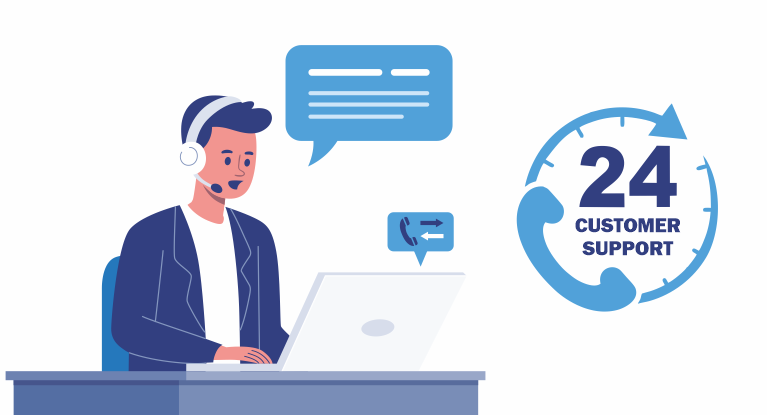Measuring Success: Metrics in Customer Lifecycle Management

5 min read
Success means different things to different people. For some, success is about accumulating wealth and buying the latest and greatest gadgets. To others, it is about having a job they love, pursuing their passions, and making a contribution to society. In this blog, we will explain about Customer Lifecycle Management.
What was once an obscure concept has become an increasingly popular top-of-mind issue amongst corporations across the globe. This is because, increasingly, organizations are finding that the concept of success has evolved from being a personal issue to a corporate one. In order to succeed, companies must determine how best to measure it and align business goals with their values.
In many ways, success is not unlike happiness. Both are dependent on individual perception and neither can ever be fully attained. But just as happiness is often an elusive goal and there may be several reasons for this:
Successful Metrics
Customer Retention Rate
It is one of the three most important customer engagement metrics. Customer Retention Rate (CRR) measures the proportion of existing customers who remain with your company over a specific period of time. CRR is a useful measure for companies in their marketing strategies as it can help them to identify existing customers that convert into paying ones, which typically provide higher revenues and profitability for companies. CRR is also useful for measuring and improving customer loyalty in defined markets such as B2C or B2B businesses.
CRM phone systems store and maintain a list of all your customers, including their demographic data, their behavioral patterns, and other information such as the type of products they have purchased from you. Retention rate is calculated by dividing the number of customers at the end of a period by the number of them at the beginning and then multiplying it by 100%. It is an extremely reliable metric. It can give you a clear indication as to how well your business is doing.
Successful businesses have higher retention rates than their competitors since customer retention is an indicator that new customers will soon follow suit.
Customer Satisfaction (CSAT)
It is a measure of how satisfied the customers are with your product or services. CSAT metrics are typically recorded using surveys or by observing customer interactions with your brand. Many companies use it in their satisfaction segmentation strategy. It divides customers into groups based on how satisfied they are with a service or product. The idea is that companies can then use that information to tailor their marketing approach to key segments (e.g., loyal customers, potential buyers, etc.) and reach out to them at optimal times in the sales cycle through targeted campaigns and strategies.
CSAT is a very subjective metric. It provides little to no additional value if you don’t have a clear understanding of what drives customer satisfaction and how it can be measured. It doesn’t tell you much if your customers aren’t happy with your services or products. However, even if they are more than satisfied, measuring CSAT can be helpful. Because it serves as an important indicator of how satisfied your customers are with your products or services. It does not, however, tell you how to improve things further.
VoIP contact centers and remote office phone systems can easily integrate with CRM phone systems, which makes the metrics obtained more meaningful as it is a holistic approach. Customer Satisfaction measures your customers’ perception of their experience while doing business with your company.
Once you know how to calculate CLV, you will be able to assess how much you can earn from your customers over the periods of time. CLV is usually measured as the total revenue earned in relation to the average costs accrued over a customer’s lifecycle.
Customer Satisfaction
Customer satisfaction is a subjective measure that relies on the customer’s perception of how satisfied they are with a product or service, relative to their perceived level of satisfaction when they first signed up for it. It involves four ‘pillars’: perceived value, trust, overall experience, and brand intimacy. The combination of these four pillars tells you how happy your customers are with the quality of your service.
Net Promoter Score
It is a metric that measures how likely customers are to recommend your service or product to others. Companies can use this metric to determine how loyal their customers are and how likely they are to be promoters of your company’s products and services. The NPS is calculated by subtracting the percentage of customers who would not recommend your brand from the percentage of promoters.
Consumer Sentiment
Consumer sentiment refers to the public’s perception of the opinions taken by consumers. Measuring on a 5-point scale where 0 to 100 usually represents a neutral opinion toward a product or service. This metric is especially helpful when you are trying to determine the public’s beliefs about your firm or products, as it can provide an image of how people feel about your business. This metric comes in handy when you want to find out if your customers are happy with your services or products.
Consumer Loyalty
Customer loyalty is one of the most important customer engagement metrics. It shows how loyal customers are to the companies, products, and services they use. Loyalty is typically measured by looking at a set of criteria that measure customer awareness, perceived value, retention, and purchase intent. Consumer perceptions of value is the sum of customer’s perception of quality and price.
Customer Satisfaction Score
Customer satisfaction score is a well-known metric that measures the quality of customer experience in a service or product. Other customer engagement metrics include Loyalty score or loyalty rate (measurement of customers’ loyalty to a specific brand, or company), defect rate (measurement of customers’ degree of negative response), and complaint rate (measurement of problems faced by customers).
Consumer Value
Customer value comprises not only the price paid by the customer for products and services but also their perceptions about what they are getting for their money. It is a combination of the functionality, quality, and ease of use of a product or service.
Customer Experience
Customer experience refers to customers’ perceptions of your company’s reliability, timeliness, and ability to deliver on promises. The measures of customer experience are based on customer satisfaction scores. These metrics can help companies identify specific areas in which they need improvement if they want to increase customer loyalty. In some ways, these metrics can be comparable to NPS (Net Promoter Score) and CRR (Customer Retention Rate).
Customer Lifetime Value
It is the amount that a customer is predicted to be worth over their lifetime with your company. The customer lifetime value is a well-known measure that helps companies determine how much profit they can expect from a customer over a period of time. Companies can use this metric to determine how valuable each individual customer is.
Customer Segmentation
The most important customer engagement metrics show how loyal customers are to your company in different target groups or markets. Segmentation involves dividing your customers into smaller groups based on existing and desired attributes, which will help companies to understand whether their products or services are meeting the needs of a particular specific group. Using this metric can determine the type of customer behavior and customer preferences to focus on.
Customer Retention
Customer retention, is more commonly referred to as “customer loyalty”. It is an important customer engagement metric. Shows how loyal customers are to your company over a specified period of time. It refers to the percentage of customers that remain loyal to your company for a specified amount of time. Companies can use this metric to find out why certain customers are not satisfied with their products or services. Then find ways they could improve to meet the needs and expectations of these disgruntled customers.
Average Handling Time (AHT)
VoIP integration is a vital piece of a Phone System’s overall customer experience. In order to be successful, it requires a well-suited business solution that allows for a smooth transition.
A vendor that ensures seamless integration between VoIP and its existing PBX will improve the overall customer experience. It is essential in determining the quality of service.
CRM Phone System is another essential piece of a VoIP integration service. CRM software should be easy to use and provide all the necessary functions for your own value proposition.
Conclusion
Every company is after a competitive edge. Product quality, customer service, and price are all important in the decision-making process of your customers. Ensuring your products are met with success requires more than just these elements. It also takes metrics to measure the success of your business. In order for you to better understand what metrics can be beneficial in measuring the progress of your business. Hope you have got an idea of successful metrics and how they can aid you in your quest for success.
Improve Your Company’s Connectivity with Unified Communications!
Explore our affordable, scalable options today!
Published: October 31st, 2023
Subscribe to Our Latest Updates
Get monthly product and feature updates, the latest industry news, and more!







